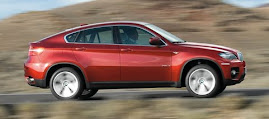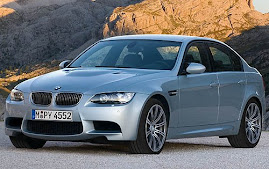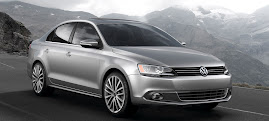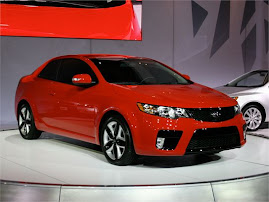 By Rory Jurnecka
By Rory JurneckaBMW's design department has been working overtime lately. Just last month, the German automaker unveiled its M1 Homage Concept at the Villa d'Este Concours on the shores of Lake Como, Italy. Now, Munich has officially taken the wraps off of a new design study called the GINA Light Visionary Model, a creation BMW says shouldn't be thought of as "just another concept car," but rather "a whole new approach to automotive design."
With its GINA (Geometry and Functions In "N" Adaptions) model, BMW set out to explore the creative freedom that might be offered with future cars while using a traditional front-mounted eight-cylinder engine and rear-drive platform. The surface of the concept features a new fabric material that BMW says is highly resistant to expansion, durable, and flexible. Underneath the covering material is a light aluminum subframe that is moveable via electric and hydraulic controls, allowing the surface itself to be reshaped according to the owner's desire. The usual elements of production cars -- doors, wheel arches, a trunk lid, engine hood, and roof -- are not present in the conventional sense. Rather, the body consists of just four components: a front panel that leads to the edge of the windscreen, two side panels (one on each side of the car), and a rear deck panel.
BMW is particularly proud of the headlights on the GINA project. When the headlights are not active, they are hidden under the car's skin. When turned on, the metal subframe moves the covering fabric skin laterally away from either side of the trademark kidney-shaped grille, exposing the double lights. Other sections of bodywork are moveable as well: the rear panel shifts to allow a spoiler to rise when traveling over a specified speed, while the rocker panels move to narrow or widen the side air intakes and extend an additional protruding rocker panel line. Even the aforementioned kidney grille is able to be widened, adding separate distinct body lines in the process.
The fabric skin itself is interesting in that it is not transparent, but it is permeable to light. This allows the rear taillights to be housed underneath the skin -- unnoticeable unless lit, allowing their light to shine through the fabric. The fabric is comprised of a mesh netting support and a separate outer layer. Combined, the material is resistant to heat and cold and even repels water. According to BMW, the material is extremely form-fitting and able to conform to various shapes and positions with a high level of precision. Changes to the underlying metal structure are made without slackening the tension of the material or damaging it in any way.
Servicing the engine is made possible by an opening in the material in the center of where a conventional engine hood would be found. The material opens to either side of the engine and closes through a series of cliplock fasteners on a central rail. Opening the doors requires the fabric to swing up and out, folding out of the way. When closed, the doors show no folds in the material whatsoever, appearing as a smooth, stretched surface. Sporty touches round out the exterior design, with a production-ready rear carbon diffuser, 20-inch alloy wheels, quad exhaust tips, and windshield frame mounted side view mirrors.
The interior of the GINA Light Visionary Model is as innovative as the outside. When without occupants, the steering wheel and instruments are positioned vertically on the center stack so as not to hinder ingress to the vehicle. As soon as the driver sits down, the wheel and gauges move to their functional positions in front of the driver, while the headrest, previously integrated into the seat, rises automatically. The seat itself and steering column move into the ideal position for the driver, the information of which is stored in the vehicle's computer. Inside, the same stretched fabric runs from the rear deck over the seats, while the door panels and center console are comprised of the same material.
Servicing the engine is made possible by an opening in the material in the center of where a conventional engine hood would be found. The material opens to either side of the engine and closes through a series of cliplock fasteners on a central rail. Opening the doors requires the fabric to swing up and out, folding out of the way. When closed, the doors show no folds in the material whatsoever, appearing as a smooth, stretched surface. Sporty touches round out the exterior design, with a production-ready rear carbon diffuser, 20-inch alloy wheels, quad exhaust tips, and windshield frame mounted side view mirrors.
The interior of the GINA Light Visionary Model is as innovative as the outside. When without occupants, the steering wheel and instruments are positioned vertically on the center stack so as not to hinder ingress to the vehicle. As soon as the driver sits down, the wheel and gauges move to their functional positions in front of the driver, while the headrest, previously integrated into the seat, rises automatically. The seat itself and steering column move into the ideal position for the driver, the information of which is stored in the vehicle's computer. Inside, the same stretched fabric runs from the rear deck over the seats, while the door panels and center console are comprised of the same material.
BMW stresses that its GINA Light Visionary Model is simply an exercise in design and technology and not a pre-production vehicle. Still, if history is any indication, BMW rarely allows its most exciting technology to stay in concept form for long. While GINA may not be viable for production in whole, individual elements may find their way to production sooner than one may imagine.
-MotorTrend.com














_(544x408).jpg)


No comments:
Post a Comment